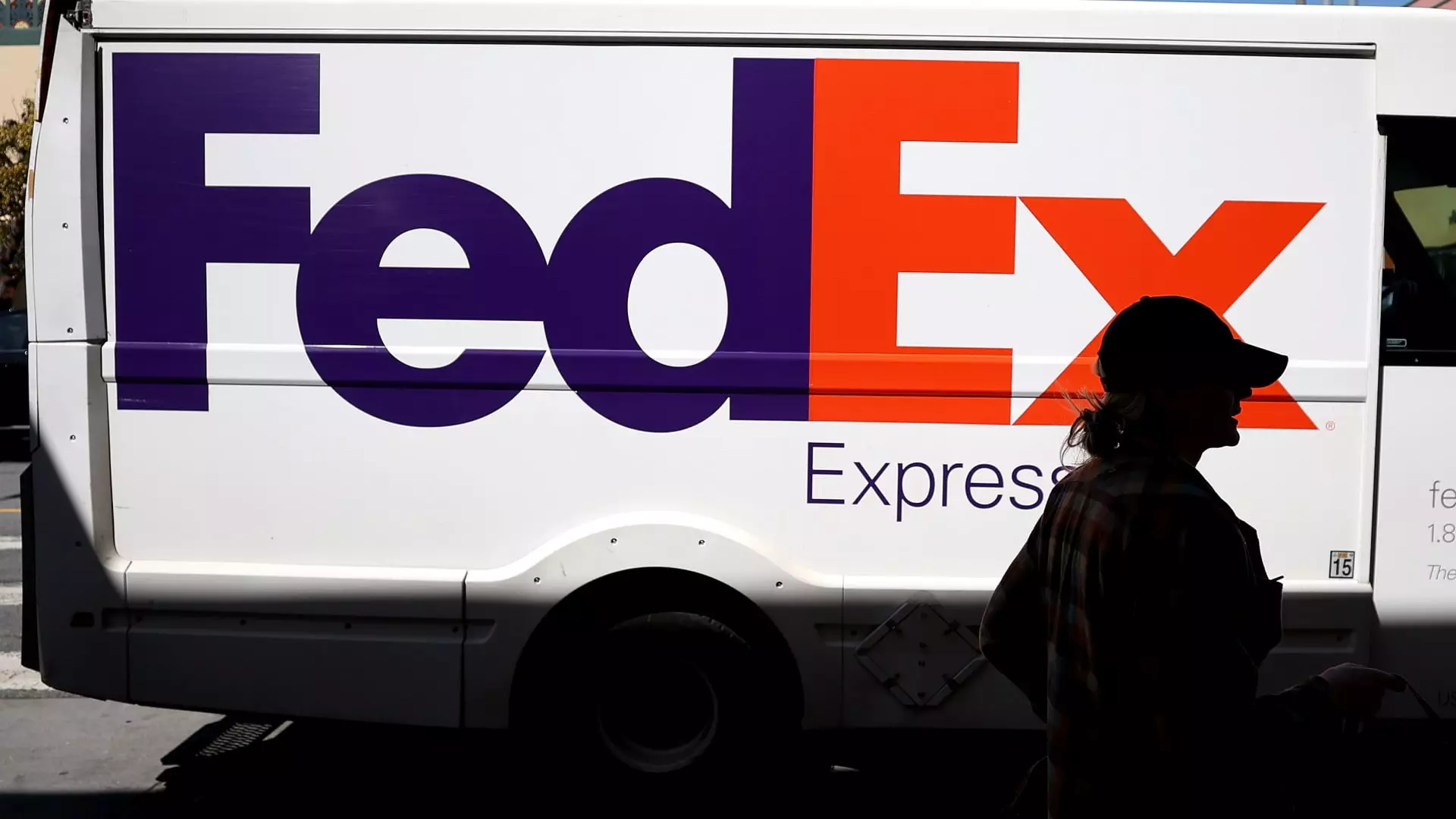FedEx’s shares saw a significant increase of over 15% in after-hours trading following the release of its fiscal fourth-quarter results. The company exceeded analysts’ expectations in both earnings and revenue. Specifically, the earnings per share came in at $5.41, adjusted, compared to the estimated $5.35. Additionally, revenue for the quarter reached $22.11 billion, slightly surpassing the expected $22.07 billion.
For the three-month period ending on May 31, FedEx reported a net income of $1.47 billion, translating to $5.94 per share. This performance was slightly lower than the previous year’s numbers of $1.54 billion and $6.05 per share, respectively. However, revenue for the quarter saw a modest increase to $22.1 billion from $21.9 billion in the prior year. Looking at the full fiscal year, FedEx’s revenue stood at $87.7 billion, down from $90.2 billion previously.
In an effort to reduce costs, FedEx announced a plan to cut $4 billion by the end of fiscal 2025. The company has already made progress in this regard, achieving its target of $1.8 billion in structural cost reductions in fiscal year ’24. The capital spending for fiscal 2024 was reduced to $5.2 billion, marking a 16% decrease from the previous year. Looking ahead to fiscal 2025, FedEx anticipates low to mid-single-digit revenue growth, largely driven by e-commerce growth and low inventory levels. The company’s efforts to consolidate its air and ground services are projected to yield an additional $2 billion in cost savings.
FedEx’s Chief Customer Officer, Brie Carere, emphasized the company’s positive outlook on e-commerce, anticipating that it will outpace B2B growth. Carere highlighted the favorable fundamentals in e-commerce that are expected to benefit FedEx both domestically and globally. The transformation program, DRIVE, has been instrumental in reshaping FedEx’s operations to align with changing market dynamics and demand patterns.
Despite the optimistic financial results, FedEx faces challenges in the form of margin pressures, particularly in its Express segment. The company’s operating margin for fiscal 2024 improved slightly to 2.6%, up from 2.5% in the previous year. However, the Express segment’s margins remained stagnant at 4.1% year over year. FedEx’s loss of the U.S. Postal Service contract to UPS poses a significant headwind, with an anticipated impact of $500 million in fiscal 2025.
Investors are cautiously optimistic about FedEx’s growth prospects, given the cost-saving initiatives and potential revenue drivers in the e-commerce space. The recent dividend increase signals management’s confidence in the company’s future performance. However, the competitive landscape and challenges in certain segments pose risks that investors are closely monitoring.
FedEx’s robust performance in Q4 demonstrates its resilience and adaptability in navigating a rapidly evolving market. The company’s strategic initiatives and focus on e-commerce are expected to drive future growth, despite prevailing challenges. FedEx’s ability to execute its cost-saving measures and enhance operational efficiency will be critical in sustaining its momentum and delivering value to stakeholders.

